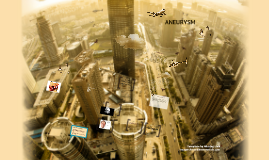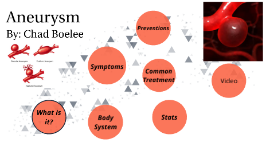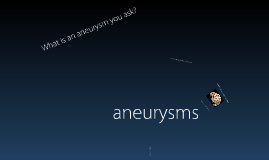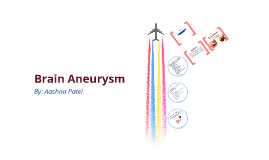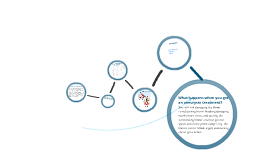Aneurysm
Transcript: An aneurysm is an abnormal widening or ballooning of a part of an artery because of weakness in the wall of the blood vessel. •The major artery from the heart (the aorta) •The brain (cerebral aneurysm) •In the leg behind the knee (popliteal artery aneurysm) •Intestine (mesenteric artery aneurysm) •An artery in the spleen (splenic artery aneurysm) <div style='position: relative; float: left; text-align: center;'><a href='http://www.careflash.com/video/abdominal-aneurysm'><img alt='Abdominal Aneurysm' src='http://www.careflash.com/newblausen/atlas/global/assets/thumbnails/0090.png'/><br/>Abdominal Aneurysm</a></div> Surgery is normally recommended. The type of surgery and the urgency of surgery depends on your symptoms and the size and type of aneurysm. Some patients may need endovascular stent repair. A stent is a tiny tube used to prop open a vessel or reinforce it's wall. . This procedure can be done without a major cut, so you recover quickly. However, not all patients with aneurysms are candidates for stenting. It is not known exactly what causes aneurysms. Some aneurysms are present at birth (congenital). Defects in some of the parts of the artery wall may be responsible. Your health care provider will perform a physical exam if you are experiencing symptoms similar to that of aneurysms. Tests used to diagnose an aneurysm are a CT Scan and an Ultrasound. PREVENTION: WHAT IT IS: SYMPTOMS: ANEURYSM COMPLICATIONS: TREATMENT: CAUSES: LOCATIONS: COMMON TESTING: Control of high blood pressure may help prevent some aneurysms. Following a healthy diet, getting regular exercise, and keeping your cholesterol at a healthy level may also help prevent aneurysms and their complications. Smokers are at a higher risk than most for getting aneurysms. The main complications of aneurysm are: •Compression of nearby structures such as nerves. This may lead to weakness and numbness. (most common with aneurysms that occur in the artery behind the knee) •Infection, which can lead to body-wide illness and rupture •Rupture, which causes massive bleeding that could lead to death. Massive bleeding is commonly seen with abdominal aortic aneurysms, mesenteric artery aneurysms, and splenic artery aneurysms. Rupture of brain aneurysms can cause stroke, disability, and death. The symptoms depend on the region of the aneurysm. If the aneurysm occurs close to the body's surface, pain and swelling with a throbbing mass is often seen. Aneurysms within the body or brain often show no symptoms. If an aneurysm ruptures, then pain, low blood pressure, a rapid heart rate, and lightheadedness may occur. The risk of death after a rupture is high. High blood pressure, high cholesterol, and cigarette smoking may increase your risk of certain types of aneurysms. High blood pressure is thought to play a role in abdominal aortic aneurysms. Atherosclerotic disease (cholesterol buildup in arteries) may also lead to the formation of some aneurysms. Pregnancy is often linked to the formation and rupture of splenic artery aneurysms.






